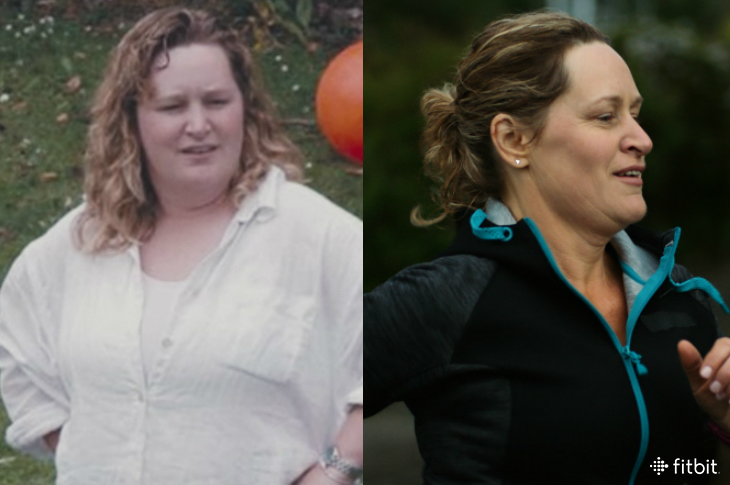
Rachel W.’s success story is heart-wrenchingly inspiring (watch it here if you haven’t already). After being diagnosed with type-2 diabetes, she turned her life around, dropping 79 pounds, and learning how to better manage her blood sugar levels, all while getting pregnant with her third child—something that had eluded her and her husband for more than a decade.
How did Rachel transform herself in just a few short years? She took advantage of a Fitbit hand-me-down to increase her daily activity and improve her nutrition habits. “Fitbit gives you the motivation to strive, to move forward, and to keep improving, and that’s what this whole journey is, it’s a journey, not a moment in time,” says Rachel.
Below, Rachel shares the steps she took throughout her health journey—from cutting back on sugar to racing 5Ks.
Rachel’s Advice for Managing Diabetes
Set One—and Only One—Goal to Start
Rachel first got serious about getting her blood sugar under control after having an epiphany. “You diet, diet, diet, go to your cupboard, eat a whole packet of biscuits, and everything you did is ruined,” says Rachel.
“And so one day I was standing by the cupboard eating more biscuits thinking, I hate myself, I hate this, I try so hard. And then, I started thinking, I am seriously addicted to sugar, and it’s 90 days to beat an addiction, in theory. So I set a goal—and this was my first goal—I said, I will go 90 days and I will not eat sugar. I’m talking biscuits and cakes, and things like that, not there’s some sugar in my Bolognese kind of stuff. I put it on the calendar, and anything I wanted to eat in that 90 days, I put in the freezer. And I did it. At the end of 90 days, I wrote, ‘Woohoo for me.’ and ate what I wanted to eat.” It was that goal, and that victory, that kicked off Rachel’s transformation.
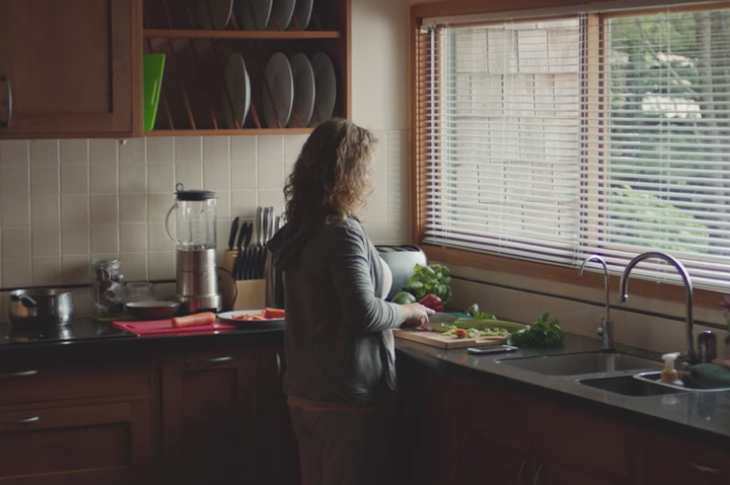
If You Can’t “Exercise,” Move More. Just Move More.
“I am a stickler for my 10,000 steps a day, and I have been since the start of this journey,” says Rachel. I’ll do whatever it takes to get them done, and that is the foundation of my exercise.”
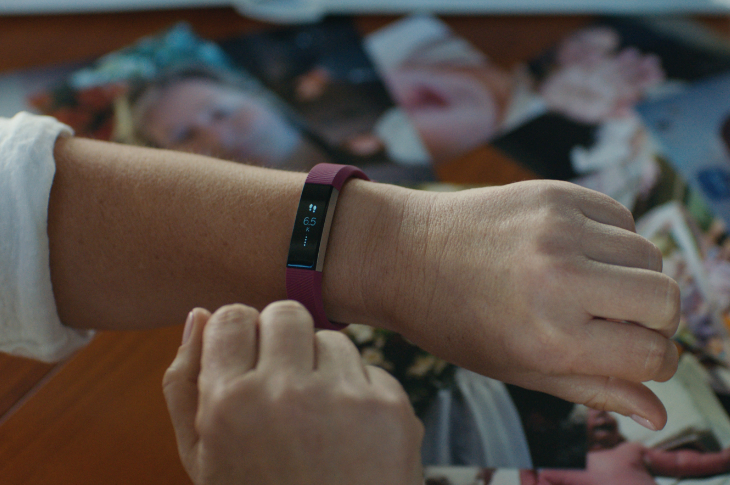
Set Goals in the Fitbit App
Fitbit allows you to set goals around exercise, weight, daily activity, water, food, and sleep. When you hit your numbers, the associated tiles in the app turn green. “It’s a really positive reinforcement,” says Rachel. “If it’s green, you know you’re good to go. You’ve had a good day. It just makes me really happy.”

Turn on Reminders to Move
“This is one of my favorite features,” says Rachel. “Your device will let you know if you’ve taken at least 250 plus steps each hour or if you need to move a bit more for the rest of the hour over the time frame you’ve set. It’s incredibly motivating.”
“I was actually in the hospital with my daughter, and she was asleep, and I was aware that the time was running on. And I think I did 10,000 steps using Reminders to Move during the time I was with her, just walking up and down the hospital room.”
Pay Attention to Calories In Versus Calories Out
“When I first started using Fitbit, trying to nail down my calories was one of the biggest things for me, because it’s very easy to blow out your calories,” says Rachel. “I was definitely eyes wide open after I’d seen the Fitbit calorie burn because it tells you how many calories you’re burning, and then you tell it how many calories you’re putting in. You would be surprised how little calories you’re burning compared to what you’re putting in your mouth, and it does make you think, ‘This chocolate biscuit I’m about to put in my mouth, that whole workout I did before isn’t even going to cover that.’ It keeps you honest.”
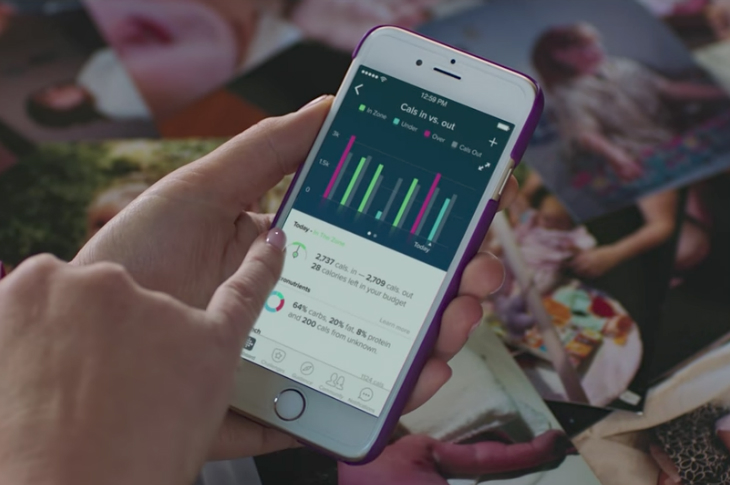
Prioritize Your Health and Wellbeing
“I had to stop thinking that I had to help everyone else, and I had to start doing some things for myself,” says Rachel. “There were times that we [balked] on that as a family. Everyone was used to me being there, but I actually had to say, no. I am going to go and do this. I am going to go out and leave the children at home. I’m going to do this for me. It wasn’t long before everyone realized that it was the best thing, everybody.”
Challenge Your Thinking
“If you’re hungry and you’ve eaten, and it’s not time to eat again, go out, do something, take the kids out for a walk,” suggests Rachel. “You often come back and go, ‘I thought I was starving, but I’m not now.’ And same with being tired. You could just be tired from being inactive.”
Celebrate Even the Smallest of Achievements
“I think you have to wait so long, if you’re not using a device, to see improvements in your health that you often get sidetracked, because it’s not happening fast enough,” says Rachel. “Fitbit lets you see your achievements along the way, even small ones. You can see quite clearly that you’re winning, you can see that your food was on point today, and that’s going to lead to good things. It’s a constant motivator.”
Get Your Family Involved
“My older daughter, she just did a 5K not long ago,” says Rachel. “I was so proud of her. And Tabitha has running gear. She’ll say to me, ‘Mom, are we running tonight?’ We run to the end of the block and then head to the park.”
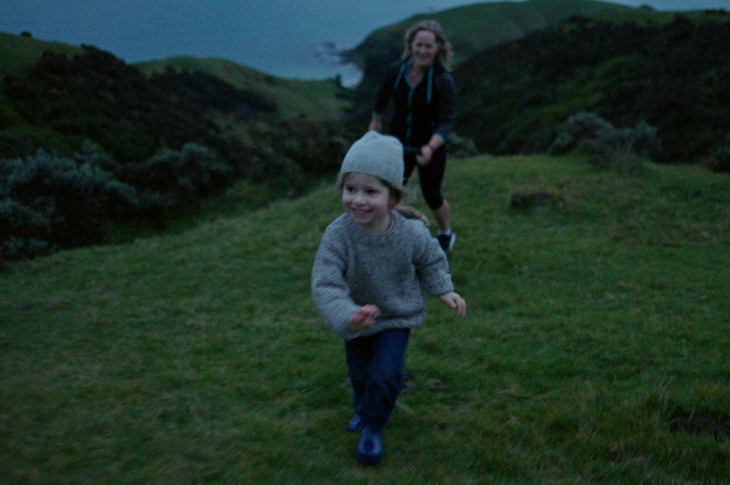
But Maintain a Bird’s Eye View
Monitoring your stats day by day is important, but evaluating your progress over longer periods is critical. “A month ago, it looked like I was going up, weight-wise,” says Rachel. “But going through a week, a month, what’s happening over three months, one year—if you look at all, you can see my journey the whole way through. And that reminds me at times when I feel like I might not be winning, where I’ve come from, where I’m going, and that these peaks and flows happen all the way through.”
Reward Yourself
“My father is a technical guru, and he loves all things innovative,” says Rachel. He would often give me his Fitbit tracker as he would upgrade.” As a result, Rachel was using a Fitbit Flex when her health journey started but had her eye on a device with heart rate. “I made myself a deal that when I lost 45 pounds, I would get myself a new Fitbit Charge HR,” says Rachel. “I think it was the first thing I bought myself in maybe a decade. I was just so proud of that thing. I loved it.”
Adjust Your Goals As Necessary
“None of this stuff happens by osmosis,” says Rachel. “You need to build on a goal, on a goal, on a goal to get where you’re going.” As a result, she changes her goals as her health and fitness evolves. For instance, “10,000 steps became 12,000 steps,” says Rachel. “Then I started jogging inside on the spot, and then my next goal was to run outside.”

Reflect on Your Accomplishments
Seeing what you’ve done and where you’ve been is motivating. “Often if you do something great in your life, like some exercise, it kind of comes, and it goes,” says Rachel. “But [with the Fitbit app] I can flip back and go, ‘Wow, look, I did this and I did that.’”
Join the Fitbit Family
Within the Fitbit app, you have access to Community, a digital space where like minded people can inspire and support each other. “It can be a lonely journey trying to do something like lose weight,” says Rachel. “But when you’ve got a community behind you, there’s people there. Any time of day or night, you can just reach out, and they’re having the same struggles, and they’re there to motivate you. [Fitbit] just brings you together with a community doing the same thing.”
Join Challenges
Through Community, you can meet people from around the world to compete against in step challenges. “It drives you to keep your steps up,” says Rachel. “Often you wake up in the morning and your friends in England might be beating you. So when you run in the morning, you’re pushing it, because you want to get back up to the top of the leaderboard.”
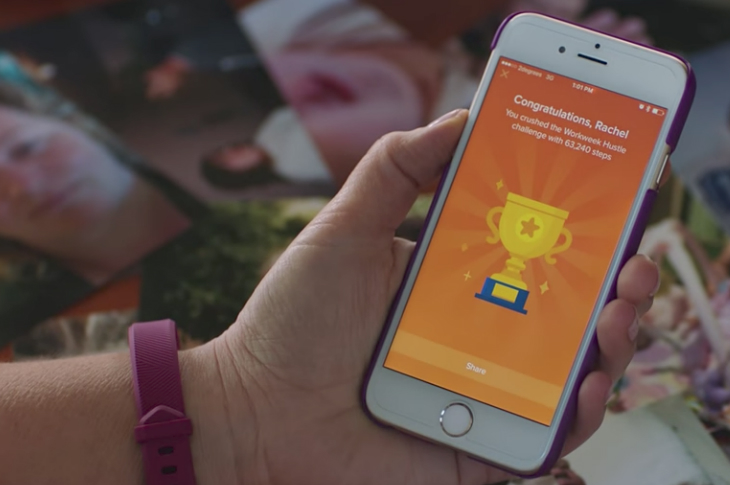
Go Deep Into Your Data
“You can see your steps on your [wrist], but when you come into the app you’re getting a lot more in-depth information about what you’ve been doing,” says Rachel. “So you can see, for here, I’m looking at the days that I’ve done workouts, and it’s recorded them all without me having to press anything. Which is a feature that’s awesome, because I often would forget to start [tracking], and now this just automatically picks it up and it just tells you how well you did.”
Gradually Increase Your Intensity
“Before I started analyzing my data, I didn’t realize that a lot of my energy was coming from rather low-impact places,” says Rachel. “So I just upped my intensity, even for short amounts of time. It’s one thing to get 10,000 steps, but if you’ve just done it slowly during the day, you need that intensity.”
The Active Minutes tile in the Fitbit app can help you keep track of this. You earn active minutes after completing at least 10 minutes of moderate- to vigorous-intensity activity. By default, your starting goal is 30 active minutes a day, which is based on the CDC’s recommendation of 20 to 30 minutes of daily moderate-to-intense activity, but you can change this at any time in the Fitbit app.
Keep an Eye on Your Cardio Fitness Score
Cardio Fitness Score not only gives you a quick snapshot of how fit you are, but it can also be a good gauge of heart health. “When I was working on improving my health, it was incredibly motivating to know that week by week, literally week by week, this number was coming down,” says Rachel. “And seeing that was just a drive to keep pushing on.”
Take a Victory Lap
“An amazing moment where I found that I’d really made it was at a 5K park run,” says Rachel. “I took my husband, Dion, and Tabitha with me, and I ran. It was very scary for me. I just started thinking I need to overtake that person, and that person, and then all I wanted to do was get back to my husband and Tabitha. And so, I ran it. I ran it in really good time; I don’t think I’ve beat my time often since, actually.”
“When I came in, I just was overwhelmed. It might as well have been the New York City Marathon. I was so emotional and so proud. I couldn’t stop crying. Poor Dion’s like, ‘What’s wrong? What’s wrong?’ and I said, ‘so good, I feel really good.’ And Tabitha’s like, ‘Okay mommy.’”
And since then, I don’t live like I’m a type-2 diabetes person,” says Rachel. “I’m just an active, busy mom that’s doing more for her health, living well.”
Every health and fitness journey is unique. The person featured here used Fitbit to help motivate them to make changes in their activity and diet that led to improvements in their wellness. The Fitbit wristbands featured here are motivational tools and are not intended to diagnose or treat a health problem or condition.
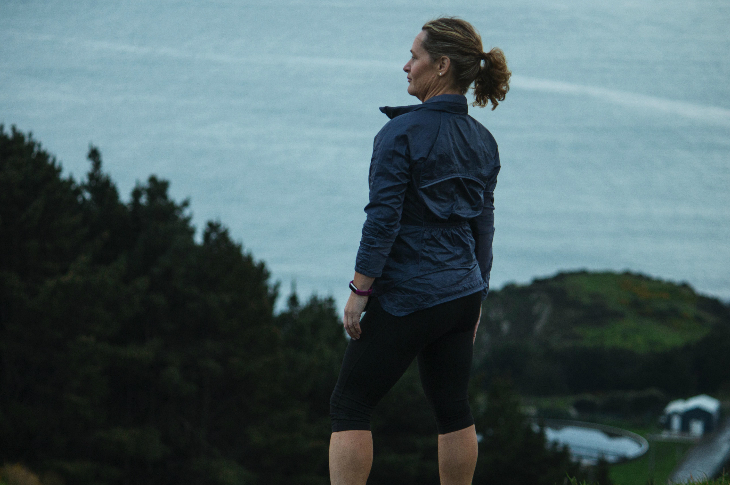
This information is for educational purposes only and is not intended as a substitute for medical diagnosis or treatment. You should not use this information to diagnose or treat a health problem or condition. Always check with your doctor before changing your diet, altering your sleep habits, taking supplements, or starting a new fitness routine.

If you have questions about a Fitbit tracker, product availability, or the status of your order, contact our Support Team or search the Fitbit Community for answers.
Please note: Comments are moderated and may not appear immediately after submission.